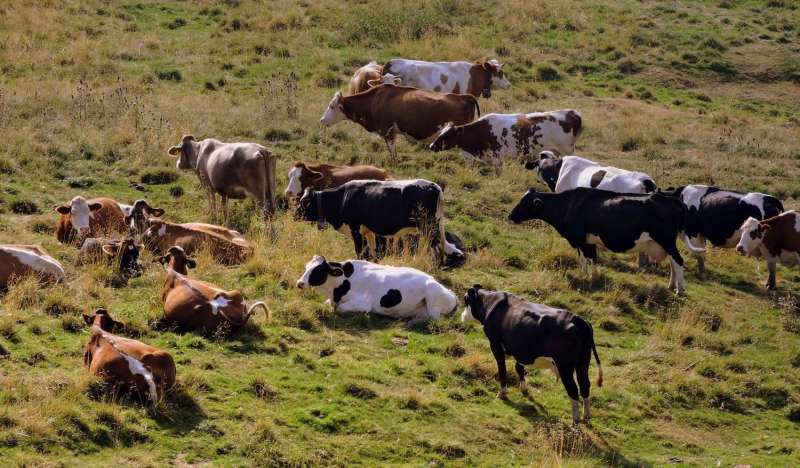Simulations suggest shared animal paths can simply result from landscape features, not social interaction

Sadie Harley
scientific editor

Robert Egan
associate editor

Movement ecologists study how animals move in ecosystems together with other individuals of the same or other species. When animals appear to move together, ecologists often assume they're interacting, e.g. a predator follows prey, or social animals follow each other.
A new study by a team of scientists from the Leibniz Institute for Zoo and Wildlife Research (Leibniz-IZW), Technische Universität Berlin, and the University of Potsdam suggests that's not necessarily the case: through movement simulations in various modeled landscapes they found they may not be interacting but rather responding independently to same physical environment.
The study, published in the journal , shows that accounting for environmental features is essential for correct assessment of animals' motivation as to where to move.
The scientific team led by Thibault Fronville, Viktoriia Radchuk and Stephanie Kramer-Schadt from the Leibniz-IZW demonstrated how neglecting the physical environment in movement ecology can lead to false conclusions about animal interactions. They tested the performance of three commonly used statistical methods to conclude on interactions between moving animals.
To this end, the team used simulated movement trajectories in various modeled landscapes. In some cases, the individual's movement was influenced solely by modeled environmental parameters, while in others their movement was only influenced by the other individual.
The study tested whether widely used methods could reliably distinguish the impacts of physical environment and inter-individual interactions on the resulting movement path of the tracked individual.
The results of the team's modeling scenarios show that when environmental context was ignored, the models frequently indicated inter-individual interactions where there were none.
"Many studies may interpret co-movement as an indication for inter-individual interactions, such as a predator hunting for prey," says Thibault Fronville, doctoral student at the Leibniz-IZW in the "BioMove" graduate school.
"But if the physical environment 'forces' animals to follow similar paths, wrong conclusions may be drawn. Our work shows that by neglecting landscape parameters, scientists risk mistaking shared habitat use shaped by landscape parameters for inter-individual interactions."
However, incorporating the physical environment or using a statistical method that accounts for the influence of other confounding variables significantly helped distinguish true interactions from coincidental co-movement.
"Understanding how animals interact with their surroundings is critical for conservation, especially in a fragmented or human-altered landscape," Viktoriia Radchuk, senior scientist at the Leibniz-IZW Department of Ecological Dynamics, says.
"Our findings highlight the risk of neglecting the physical environment and suggest a solution for more reliable outputs when working on animal movement."
The scientists hope that their findings will contribute to taking greater account of the characteristics of the landscape in future studies of animal interactions. This will ultimately increase the accuracy of the assessments of what drives animal movement and thus improve strategies for wildlife conservation and habitat management.
More information: Thibault Fronville et al, Considering landscape heterogeneity improves the inference of inter-individual interactions from movement data, Movement Ecology (2025).
Provided by Leibniz Institute for Zoo and Wildlife Research



















